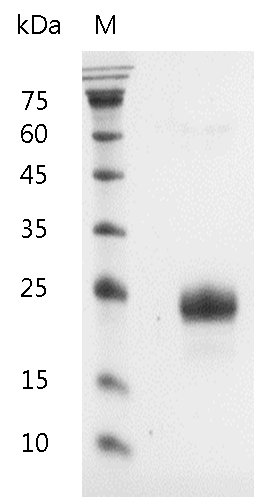| Background |
The human GM2A protein, also known as GM2 ganglioside activator protein, is a small glycoprotein that plays a crucial role in lipid metabolism. It is primarily expressed in lysosomes, where it binds to and facilitates the breakdown of a type of lipid molecule known as GM2 ganglioside. This lipid molecule is typically found in high concentrations in the nervous system and plays a key role in neural signaling. Deficiencies in the GM2A protein have been linked to a rare genetic disorder known as GM2 gangliosidosis, which can lead to the accumulation of GM2 ganglioside in the brain and nervous system. This can result in severe neurological symptoms, including developmental delays, seizures, and loss of motor function.
Recent research has also suggested that the GM2A protein may have potential therapeutic applications in the treatment of certain types of cancer. Studies have shown that the protein can help to induce apoptosis (cell death) in cancer cells, and may be able to enhance the effectiveness of certain chemotherapy drugs. Overall, the human GM2A protein plays a critical role in lipid metabolism and has important implications for a range of health conditions, from rare genetic disorders to cancer. |
| Synonyms |
Cerebroside sulfate activator protein, GM2-AP, Sphingolipid activator protein 3, SAP-3 |
| Uniprot ID |
P17900 |
| Molecular Weight |
The protein has a calculated MW of 21.92 kDa.
The protein migrates as 24 kDa under reducing condition (SDS-PAGE analysis). |
| Expression System |
HEK293 cell |
| Purity |
>95% as determined by SDS-PAGE analysis. |
| Activity |
Testing in process |
| Endotoxin Level |
<1 EU per 1 μg of the protein by the LAL method. |
| Protein Sequence |
A DNA sequence encoding Human GM2A Protein (#P17900)(Met1-Ile193) was expressed with polyhistidine tag at the C-terminus. |
| Protein Tag |
His Tag (C-term) |
| Form |
The protein was lyophilized from a 0.2 µm filtered solution containing 1X PBS, pH 7.4. If you have any concerns or special requirements, please confirm with us. |
| Application |
Cell Culture |


 No references are available
No references are available
 Follow Us
Follow Us